Rokeby Museum
Introduction
Text-to-speech Audio
Images
The Robinson's main house at the Rokeby Museum. Exhibit
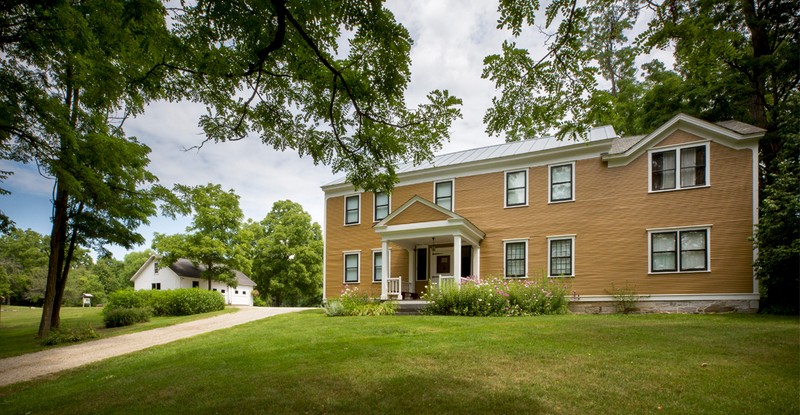
Exhibit space within the Rokeby Museum.
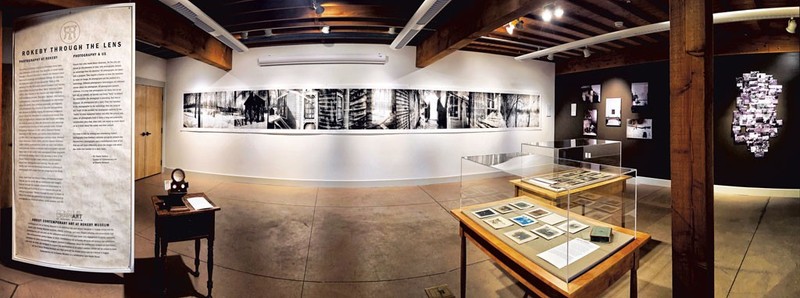
Rowland Thomas Robinson and his wife, Rachel, harbored dozens of fugitive slaves at Rokeby.
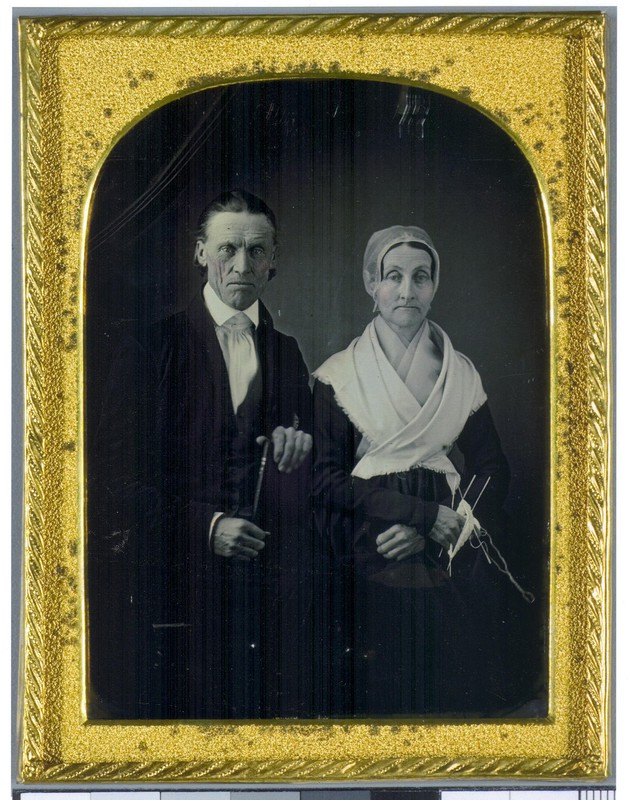
The stone smokehouse dates to c. 1850.
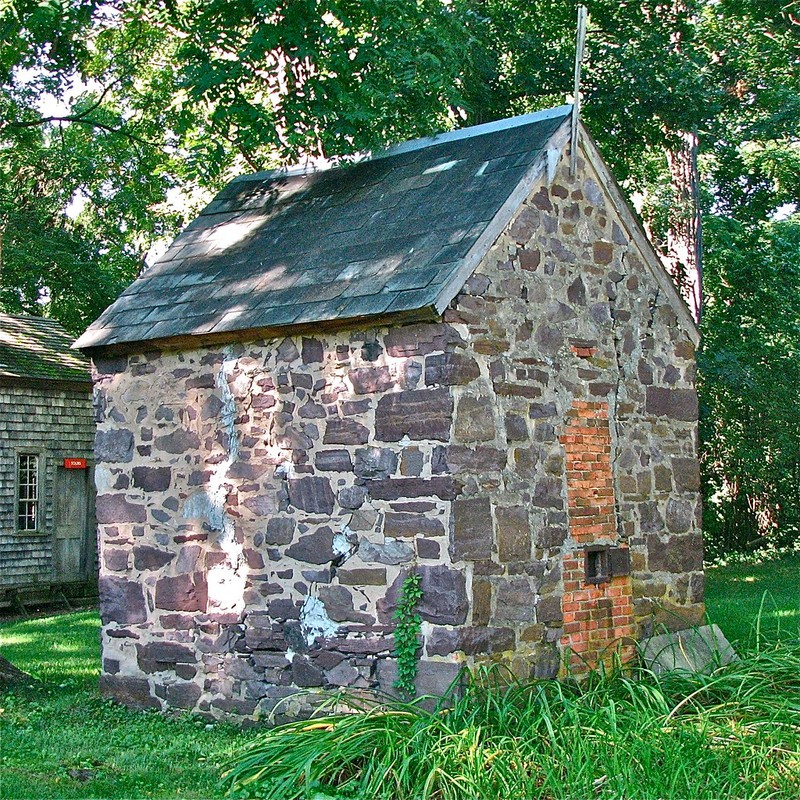
"Rowlie" and Mary Robinson, with a canine friend, at work in front of the old kitchen's hearth in the early 1900s.
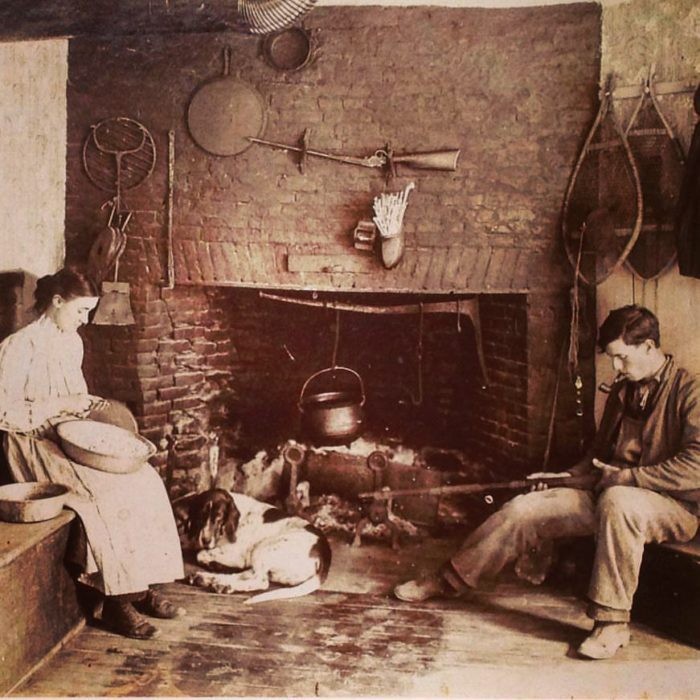
Backstory and Context
Text-to-speech Audio
The first Robinsons, Thomas and Jemima, arrived in Vermont from Rhode Island in 1792 and purchased land and the original farmhouse from the Dakin family the next year. Thomas, soon after, became involved in both the Vermont and Ferrisburgh Anti-Slavery Societies. However, it was Thomas’ and Jemima’s son, Rowland Thomas Robinson, that would become fully immersed in the abolitionist movement while managing the family’s grist and sawmills and operating a large sheep farm.
It is primarily Rowlands correspondences that reveal how the UGRR functioned, especially in the Northern states, and how fugitive slaves arrived at Rokeby in their search for a safe haven as they sought permanent freedom. Rowland left approximately 300 letters behind, to include correspondences with national abolitionist figures such as Lucretia Mott, William Lloyd Garrison and Isaac T. Hopper. Some of his letters provided specific details regarding individual fugitive slaves and how they traveled north. Rowland’s letters reveal that once runaways crossed the Mason-Dixon Line, they were rarely hounded by slave catchers and received only sporadic aid from members of the UGRR as they made their way north. The letters also show that there was no single, prescribed route north. Many runaways chose their route north based on specific circumstances related to destination, family, friends, and religion.
One former slave, Simon, travelled to the Robinson’s farm from Philadelphia after Oliver Johnson wrote Rowland asking if he could employ him on the farm rather than sending him on to Canada. The reason for this was that Johnson felt Simon would be safer at Rokeby rather than left to fend for himself in an unknown country. In other words, Rokeby was not a place for runaways to hide, but a place to start anew. In another correspondence, Rowland negotiated for a fugitive’s freedom with his former owner, Ephram Elliot, from North Carolina. While the negotiations failed, the letters reveal how Rowland was unafraid that Elliot might send someone to retrieve his former “property.”
Rowland, who also believed in full civil rights and equality for all Blacks, established a school at Rokeby to provide education for all in 1839. The two-story brick schoolhouse with bell tower educated Quakers and freed Blacks alike until it was closed in 1846. He also helped found the New York Association of Friends for the relief of Those Held in Slavery and the Improvement of the Free People of Color in 1839.
Rowland was an ardent follower of William Lloyd Garrison’s belief in immediate emancipation, rather than a gradualist who sought a slower, political process to abolition. As a result, he and a few other Quakers clashed with the majority gradualists and broke away from them sometime in the 1840s, branded as radicals. This fact might explain why abolition stopped being a topic within his correspondences after 1850, despite his name being mentioned in the writings of Frederick Douglass. After the Civil War, Rowland advocated for full citizenship, equality and civil rights for all freedmen.
After Rowland died in 1879, the farm passed to his son, Rowland Evans Robinson, who authored various folktales and UGRR stories. Two of Rowland E. Robinson’s daughters, Rachel and Mary were successful commercial and botanical artists respectively. The last Robinson to reside at Rokeby was Elizabeth who died in 1961 with no heir. It was she who left Rokeby to be operated as a house and farm museum.
Aside from the farmhouse, the Rokeby Museum also includes the sheep/dairy barn (c.1800), sheep dip (a pond used to wash sheep prior to being sheered, c. 1801), smokehouse, creamery, privy, slaughterhouse/toolshed, and granary all built sometime around 1850. Since the Robinsons discarded little, many of the items contained in the buildings are original and some date to the 1790s.
Sources
Williamson, Jane. "National Historic Landmark Nomination Form: Rokeby Museum." United States Department of the Interior/National Park Service. January 13, 1997. Accessed November 18, 2019. https://npgallery.nps.gov/NRHP/GetAsset/NHLS/74000201_text
"Meet the Robinsons of Rokeby" Burlington Free Press. August 8, 2014. Accessed November 18, 2019. https://www.burlingtonfreepress.com/story/news/local/vermont/2014/08/08/meet-robinsons-rokeby/13702049/
Williamson, Jane. "Rowland T. Robinson, Rokeby, and the Underground Railroad in Vermont." Vermont History Vol. 69 (symposium supplement): 19-31. 2001. Accessed November 18, 2019. https://vermonthistory.org/journal/69/vt69_s03.pdf
"The Robinson Family" and "The Historic Site." Rokeby. Accessed November 18, 2019. http://rokeby.org/about/the-robinson-family/
